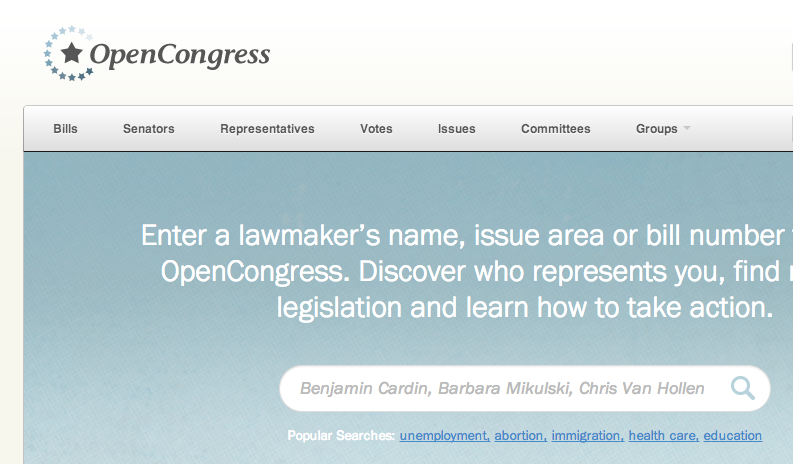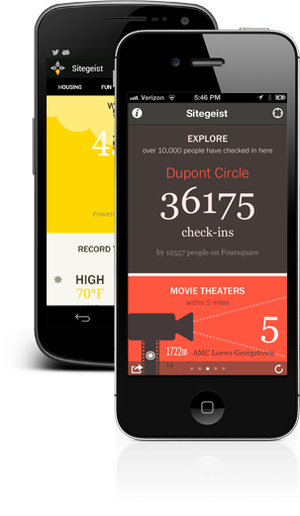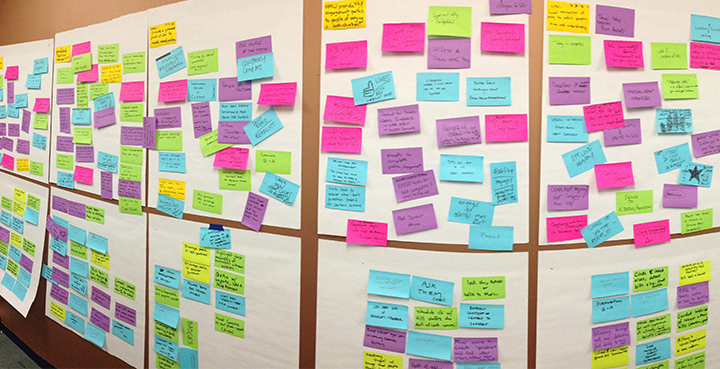Human-centered design: How we’re rethinking OpenCongress

On October 29, 2013, we launched a new, cleaned up version of OpenCongress. OpenCongress serves as a nonpartisan source for legislative information. Originally developed by the Participatory Politics Foundation with funding and support from the Sunlight Foundation, we proudly acquired it, and are looking forward to making it one of our core offerings.
Over the course of the last couple of months, we’ve made technical upgrades and added functionality to its already rich set of congressional information and participatory tools. As part of our effort to revitalize the site, refining and expanding its purpose and usability, we’ve committed to putting OpenCongress through a rigorous human-centered design research process.

A formal introduction
Human-centered design is a process and set of techniques for finding solutions to problems that the people we’re designing for actually have. Our first exploration of a human-centered design approach was with Sitegeist, the product of our Fall 2012 collaboration with IDEO, an international design firm and long-time advocate of human-centered design. Thanks to support from the Knight Foundation, we were able to partner with IDEO to focus our energy in building the third of three mobile “National Data Apps” that would provide a service that people wanted.
We found success in that process. Sitegeist has received multiple design awards (a Bronze medal from IDEA in the Digital Design category and Core77 named Sitegeist a professional notable in their 2013 Design Awards), unexpected and welcome support from the real estate community and continued praise from the U.S. Census Bureau, the source for much of the data. We’ve found new audiences and reached people in a way that we weren’t before. We’re embracing that success and look forward to incorporating the human-centered design process into new and existing projects.
Test drive
In September, Hilary Hoeber, former IDEO UX designer, led 20 members of our staff through an extensive workshop, introducing staff from throughout Sunlight to the concepts of human-centered design. We stepped outside of the bubble we’re normally in and learned to approach a problem face first — and I mean that in the most literal way possible. All of our human-centered design research starts with person-to-person human interaction. We begin with interviews.
Our workshop was centered around an issue that was both new to us, but had a familiar grounding in government affairs and citizen awareness. We were tasked with discovering how we could better prepare citizens for emergencies. We went out in teams and interviewed people that had experiences with and opinions about emergency preparedness. When we returned, Hilary led us through a discovery process in which we iterated through several techniques that helped us to discern themes and identify trends in how people answered questions. As the workshop culminated, we brainstormed solutions to some of the needs that we had identified.

The open highway
We’ve taken what we practiced in September and have been applying it to our new work on OpenCongress. We visited Chicago with Hilary to get a perspective from outside the Beltway and spent three intense days conducting user interviews. We continued our interviews in Harrisburg, Penn., Richmond, Va., Charlottesville, Va., and San Francisco.
With opinions and passion transferred to sticky notes, we plastered our conference room walls with stories from potential users of OpenCongress. We’ve bucketed and “rebucketed” them to come up with a series of principles that we’re keeping in mind as we brainstorm modifications and new features that will help address the needs that we discovered with the help of our interviewees.
Driverless cars and high speed trains
In 2014, we’ll take OpenCongress through a full redesign and will incorporate our design research into the results. Our list of brainstormed changes and new features is robust. The implementation will be informed by a wireframing process and checked against user testing. As we proceed, we’ll look toward our list of guiding principles (at right) to make sure that we’re building a tool that reflects the needs and use cases of the people we serve with our tools.

